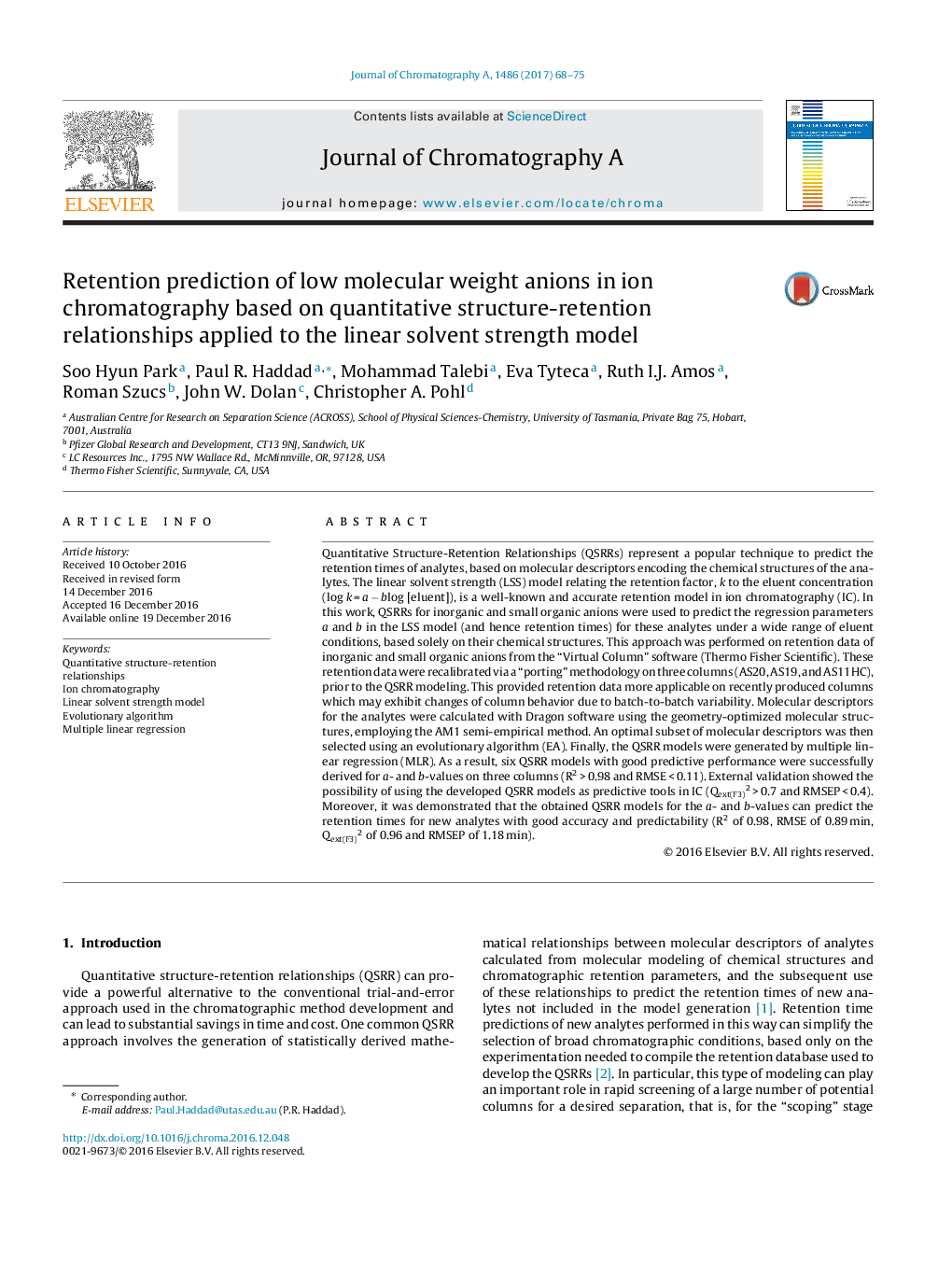| کد مقاله | کد نشریه | سال انتشار | مقاله انگلیسی | نسخه تمام متن |
|---|---|---|---|---|
| 5135808 | 1493440 | 2017 | 8 صفحه PDF | دانلود رایگان |

- QSRR models for a and b values in linear solvent strength model in ion chromatography are generated.
- Databases of a and b values of small anions on AS20, AS19, and AS11HC columns were used.
- Multiple linear regression was used to correlate a and b values to descriptors selected by evolutionary algorithm.
- Predicted a and b values enable the prediction of the retention times of unknown small anions.
Quantitative Structure-Retention Relationships (QSRRs) represent a popular technique to predict the retention times of analytes, based on molecular descriptors encoding the chemical structures of the analytes. The linear solvent strength (LSS) model relating the retention factor, k to the eluent concentration (log k = a â blog [eluent]), is a well-known and accurate retention model in ion chromatography (IC). In this work, QSRRs for inorganic and small organic anions were used to predict the regression parameters a and b in the LSS model (and hence retention times) for these analytes under a wide range of eluent conditions, based solely on their chemical structures. This approach was performed on retention data of inorganic and small organic anions from the “Virtual Column” software (Thermo Fisher Scientific). These retention data were recalibrated via a “porting” methodology on three columns (AS20, AS19, and AS11HC), prior to the QSRR modeling. This provided retention data more applicable on recently produced columns which may exhibit changes of column behavior due to batch-to-batch variability. Molecular descriptors for the analytes were calculated with Dragon software using the geometry-optimized molecular structures, employing the AM1 semi-empirical method. An optimal subset of molecular descriptors was then selected using an evolutionary algorithm (EA). Finally, the QSRR models were generated by multiple linear regression (MLR). As a result, six QSRR models with good predictive performance were successfully derived for a- and b-values on three columns (R2 > 0.98 and RMSE < 0.11). External validation showed the possibility of using the developed QSRR models as predictive tools in IC (Qext(F3)2 > 0.7 and RMSEP < 0.4). Moreover, it was demonstrated that the obtained QSRR models for the a- and b-values can predict the retention times for new analytes with good accuracy and predictability (R2 of 0.98, RMSE of 0.89 min, Qext(F3)2 of 0.96 and RMSEP of 1.18 min).
Journal: Journal of Chromatography A - Volume 1486, 24 February 2017, Pages 68-75